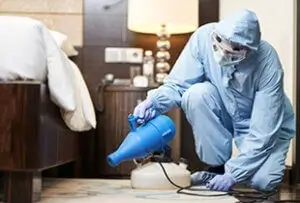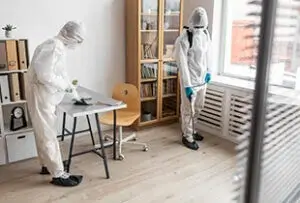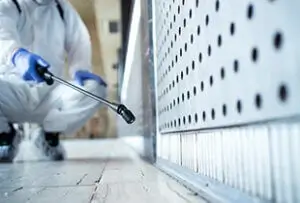
Bed Bug Treatment Melbourne, VIC
Looking for safe bed bug pest control in Melbourne so your children and pets are safe in your house? Are you suffering from sleepless nights and searching for bed bug treatment services in Melbourne? We are the leading pest control company in Melbourne. Our consistent quality pest control services have made us the first choice of residential and commercial clients for beg bug extermination.
Providing superior pest infestation treatment services requires highly experienced pest control specialists, standardised procedures, and modern tools.
You can speak to an expert about our preventative bed bug pest control and prevention services by contacting us as soon as possible. Call (04)33949536 for more details.
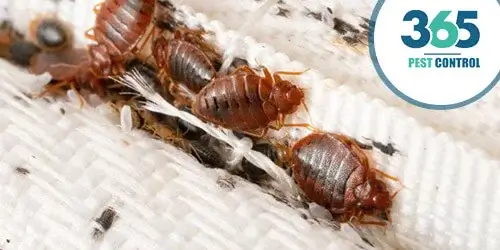
Bed Buds Pest Control Service Melbourne

Household Bed-Bug Treatments
Our specialized bed bug pest control services! We understand how distressing and disruptive a bed bug infestation can be, so we are here to help. We provide practical and comprehensive bed bug removal solutions from our team of skilled and experienced pest control technicians.
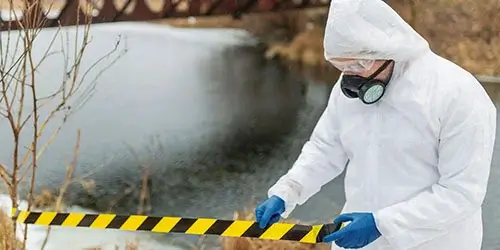
Commercial Bed-Bug Treatment
Our Melbourne bed bug pest control treatment safeguards your commercial/business property from bed bug infestations. We know these tiny, persistent pests can negatively affect your bottom line. Cutting-edge methods and specialized expertise provide effective bed bug extermination.
Process of Our
Bed Bug Pest Control Treatment Plan

Inspection
Inspection

Bed Bug Elimination
Bed Bug Elimination

Identification
Identification

Discretion and Safety
Discretion and Safety

Customized Treatment Plan
Customized Treatment Plan

Prevention Tips
Prevention Tips

Preparation
Preparation

Follow-up Inspections
Follow-up Inspections
Reason to Choosing 365 for Bed-Bugs Control in Melbourne, VIC
- Qualified & well exp. Technicians
- Environmental friendly products
- Police check employees
- Always arrive on time
- Clean & calibrated equipment
- Quick response
- No smelly odours
- Guaranteed results
- Comprehensive support
- Focus on pest prevention
Request a Callback
FAQ on Bed-Bugs Control
In places where bedbugs hide, look for fecal stains on linens or pillows. Bedbug feces are dark or rusty on sheets, mattresses, bedclothes, and walls. It is best to remove all the bedding and thoroughly inspect it for bugs or waste if you suspect an infestation. Then, remove the dust cover from the wood framing and inspect the seams. If the fabric is tacked to the wooden frame, pull it back. Otherwise, contact one of our bed bug control experts near you 365 pest control.
Ans. Here are some recommendations for getting rid of bedbugs: – Clean up the places where they are present.
The highest dryer setting should be used for clothing, curtains, bedding, and linens after washing them in hot water. Objects unable to be washed should be placed in the dryer and dried for 30 minutes on high.
- Remove bedbug eggs from mattress seams before cleaning.
- The vacuum cleaner bag should be placed in a plastic bag, then thrown in the outside trash can after you have cleaned the bed and the space around it.
- Remove bedbug hiding spots by patching plaster cracks and glueing down flaking wallpaper.
- The area around the bed should be cleared of debris.
- You can opt for our advanced bed bug control treatment if you are unsatisfied with the results despite following these tips.
Ans. Temperatures exceeding 46 degrees Celsius can destroy bed bugs. All bed bug life stages, including eggs and adults, are destroyed by heat. Chemical-free bed bug heat treatments are available. Furthermore, it has been demonstrated that bed bugs can become resistant to insecticides and chemicals.
A bed bug heat treatment can be completed in 24 hours, allowing for rapid occupancy. Chemical treatments may require several visits spaced over weeks and include numerous pesticide applications.
It is not necessary to dispose of furniture in 99 percent of situations since heat can kill bed bugs in locations you wouldn’t think to check.
Ans. Among the many ways to get rid of bed bugs, you can use insecticides. Among the most common pesticides are pyrethroids and pyrethrins. These pesticides work quickly and are not harmful to both humans and animals.
Using desiccants for bed bug extermination is another method. Insects are killed by removing their outer layer of protection, which would cause them to dry out and perish. Two common desiccants include diatomaceous earth and silica aerogel. Bed bugs cannot develop resistance to desiccants because they have a high death rate.
Our experts at 365 Pest Control Melbourne will evaluate your bed bug infestation and come up with a plan to eliminate all the bugs from your home.
Ans. There is an itching sensation around a lighter area of the bed bug bite. Red welts or bumps that form a line or zigzag pattern. Red lumps that are surrounded by blisters or hives. A raised or flat area of the skin may be an inflammatory or papular eruption.
People who have been bitten by bed bugs may develop severe reactions and symptoms. These symptoms necessitate medical attention:-
- Blisters
- Fever
- Nauseousness
- Flu-like symptoms
- A swollen tongue
- An erratic heartbeat
Additionally, bed bug bites can lead to sleep deprivation. Because bugs mainly feed at night, some people may avoid sleep altogether or may only get sporadic or disturbed sleep as a result of being eaten. We are here to help you eliminate these annoying bed bugs so you and your family can live a happier life.
Ans. After the treatment, wash all your bedclothes at a temperature of at least 60°C. Always inspect your suitcases before bringing them indoors, especially if you have stayed in a hostel. Don’t buy secondhand furniture – make sure old beds don’t carry travelers!
Ans. Regularly clean the bedding, sofa, cushions, rugs, and surrounding areas. To remove bed bugs, clean and vacuum bed mattresses, sofas, rugs, and surrounding areas.
A professional bed bug exterminator can apply effective bed bug treatments, including chemical and heat treatments. To prevent bed bug resistance as well as adverse health effects on humans, chemical and non-chemical treatments targeted at bed bugs must be applied and handled with extra caution. Bed bugs and their eggs can be killed by heating them to temperatures higher than 45 degrees Celsius.
Learn More
About Bed-Bug:

Feeding Habits
Bed bugs are nocturnal insects, preferring to feed on their hosts during the night. They are attracted to humans and animals' warmth and carbon dioxide. Bed bugs use specialized mouthparts to pierce the skin and draw blood from their hosts. Although their bites are not usually painful, some people may develop itchy red welts as a reaction to saliva injection during feeding.

Reproduction and Lifecycle
Female bed bugs can lay hundreds of eggs during their lifetime. The eggs are small, white, and often applied in clusters in hidden locations. Nymphs hatch from these eggs and pass through five moulting stages before adulthood. A bed bug's lifecycle from egg to adult typically takes about 6-8 weeks, but this can vary depending on environmental conditions and food availability (blood).

Physical Characteristics
Adult bed bugs are about the size of an apple seed, approximately 4 to 5 mm long. They have a flat, oval-shaped body with a reddish-brown colour. After a blood meal, their bodies become longer and swollen. Nymphs, Immature bed bugs, are smaller and lighter in colour, ranging from translucent to golden brown.

Habitat
As the name suggests, bed bugs are commonly found in and around sleeping areas, particularly in beds and mattresses. However, they can also infest other furniture, such as couches, chairs, and nightstands. They hide in cracks and crevices daily, making them challenging to spot.

Health Risks
While bed bugs do not transmit diseases to humans, their presence can cause psychological distress and anxiety. Bites can lead to skin irritation and secondary infections from scratching. Rarely, individuals may experience an allergic reaction to bed bug bites.
